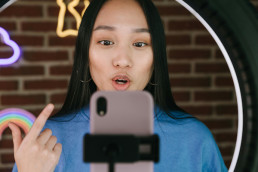Why does localisation matter for Chinese digital marketing?
If you’re serious about building a successful Western brand in China, it’s vital to understand the concept of localisation. What’s more, you must know how to successfully localise your brand in this sophisticated, vast, culturally complex, and nuanced society.
What is brand localisation in China?
When we talk about brand localisation we describe a process of adapting a Western brand for a different market, so that its messaging, identity and brand attributes resonate more successfully with the local target customers.
When Western brands take steps to localise their brands for China, they have a better chance of creating a meaningful connection with local customers, building awareness and engagement, and not causing offence! Chinese culture is highly nuanced and contextual and even some of the biggest global brands have made inadvertent cultural faux-pas, resulting in anything from humour to boycotting!
What sort of activities help to localise a brand?
Different strategies exist to localise a brand in China, but the main areas include:
- Investing in local research and insights to understand the unique needs of your target Chinese customer group
- Adapting your brand to meet Chinese needs, including elements such as the brand name, colour palette, visual attributes and messaging.
- Localising your digital assets to work swiftly, smoothly and correctly for the Chinese market (including smartphone optimisation and localised UX, and taking censorship and access into account.)
- Using local influencers, or KOLs, who can bring your brand to their followers in a meaningful, culturally appropriate way that enhances adoption and positive perceptions.
- Working very carefully on messaging – ideally creating Chinese language content from scratch rather than seeking to adjust existing Western messages. This is because translation efforts can be clumsy, and it may be best to adapt key messages entirely with this audience in mind.
Chinese customers are sophisticated and technologically advanced. Yes, they are keen to shop with quality Western brands, but there is also huge competition in China and increasingly these quality, high-end brands are Chinese themselves. So Western brands must work hard to localise their brand carefully.
Where Western brands go the extra mile to do this, Chinese customers are more likely to appreciate their cultural awareness and targeting efforts and feel that the Western brand is authentic and genuine in wanting to meet their needs. Where Western brands are clumsy, they may fail, and lose potential customers forever.
Examples of Localisation
In a country so vast, so complex and so driven by innovation, trends and technological advancement, localisation is an ongoing challenge for Western brands, particularly as it requires native language skills and a real ‘ear on the ground’ for what’s going on in the Chinese target market. Examples of localisation could include:
- Responding to local payment preferences, so that your Chinese language website uses AliPay, WeChat Pay or Union Pay, for example.
- Ensuring your Chinese language digital hub is optimised for Chinese UX, including typography and design considerations (hint – Chinese customers love a busy and visually packed page – unlike Western customers!)
- Using digital devices such as QR codes, which are far more popular in China than in the West.
- Remembering that Chinese customers prefer to sign up for things using phone numbers, rather than email addresses.
- Considering local promotions, pricing, and competitive activity in any particular geographies you are targeting for your products.
Localising digital marketing assets in China
There are several steps you can take to localise your digital assets in China. Here are three priorities to begin:
1. Website
A good approach is to begin with your Chinese website. If you are translating your existing content, make sure that you consider local expressions, idioms and cultural references as well as the actual language itself. Sometimes creating content from scratch for your Chinese audience can be easier.
Consider the UX carefully when you build Chinese website pages too, remembering that Chinese readers scan content differently, and like to see a page packed with graphics, animations, text and links (unlike Western audiences). You’ll need to localise with hosting and your URL as well, and remember to eliminate any links to Western websites, which are banned.
2. Baidu SEO and PPC
Invest in SEO so your Chinese website begins ranking for your keywords on Baidu. This long-term strategy requires consistent effort and fresh content, but the investment will pay off. In the meantime, you can drive short-term leads to your new site with Baidu PPC campaigns. SEO and PPC campaigns will work hand in hand to bring traffic to your content, and careful analytics monitoring will allow you to refine your parameters for the best results continually.
3. Social media
Choose the Chinese social media accounts that your target market tends to use. This might include the obvious ones, such as WeChat, Weibo & DouYin, but it might also include some of the smaller and more niche accounts, such as Little Red Book, if your target demographic is a heavy user. Remember too that ‘smaller’ and ‘niche’ are relative terms in a country as vast as China, where over a billion citizens are online!
Get the help you need
A Chinese digital marketing agency can help you with your Chinese marketing localisation efforts so that you get it right the first time and avoid wasting time and budget. Market Me China offers the service of highly skilled digital marketers with native language skills, offering the expertise and hands-on support you need to localise your brand and deliver high-performance digital marketing campaigns in China.
We work flexibly around your needs to support your business to succeed in this exciting, lucrative market, whether you’re a new brand looking to launch or an existing business seeking to grow or enter a new Chinese target market. Please contact us in the first instance to learn more about how we can help you.
Related Posts
11th April 2025
Six Top Tips for Working with Chinese KOLs
26th March 2025
Can Small Western Brands Compete in China?
27th February 2025





